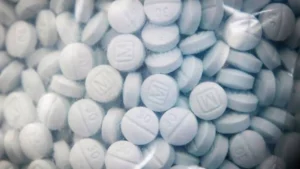
The number of drug overdose deaths in the United States is still increasing every month, according to new data, but the pace appears to be slowing.
New estimates from the US Centers for Disease Control and Prevention’s National Center for Health Statistics projects that more than 112,000 people died from a drug overdose in the 12-month period ending in May, an increase of more than 2,700 from the previous year.
There were 112,024 overdose deaths in the 12-month period ending in May, compared with 109,261 in the 12-month period ending in May 2022, a 2.5% increase.
Dr. Katherine Keyes, a professor of epidemiology at the Columbia University Mailman School of Public Health, noted that the increase is leveling off.
“We still have an extraordinary number of overdose deaths that is orders of magnitude higher than we’ve seen in previous years,” she said. However, “the increase that we [saw] in 2021 has slowed down.”
These month-to-month increases are gradual, and Keyes notes that the latest increase in deaths is still lower than the jumps in drug overdose deaths seen during the early years of the Covid-19 pandemic.
“There were extraordinary increases in 2020 and 2021 that have started to flatten out in 2022 – now going into 2023. They’re not declining yet,” Keyes said. “But the pace of the increase is certainly slowing.
So that is both good news and indicative of a continuing public health crisis.”
Keyes highlights that these small accumulation of overdose deaths are still putting 2023 on track to be another devastating year amid the drug epidemic.
“It’s still slightly higher than previous 12-month periods. So, it certainly still indicates just a devastating impact on population health,” she said.
Certain states – particularly in the western United States – have seen steep increases in deaths in comparison with national totals.
Washington had the highest increase: more than 37% from the year ending May 2022 to the year ending this May, from 2,373 to 3,254.
Fentanyl and other synthetic opioids were involved in the vast majority of overdose deaths, according to the provisional data, followed by psychostimulants such as methamphetamine.
“Fentanyl is an unpredictable product, and people who use too much can rapidly have an overdose,” Keyes said, adding that the drug is particularly dangerous for people who don’t know they are consuming it.
“Many people who use drugs are more tolerant to fentanyl and prefer it,” she said. “Other people use it without knowing it, and that can be very dangerous because people who don’t have a tolerance to opioids who are exposed to fentanyl only need a very small amount of exposure to rapidly induce an overdose.”
The US Food and Drug Administration has approved the first over-the-counter version of naloxone, or Narcan, a drug used to reverse opioid overdose.
The nasal spray is now available in stores and online. But Keyes says putting naloxone out there is simply not enough to get a handle on the opioid epidemic. Rather, she likened it to someone going to the hospital with a broken leg,
“If someone breaks their leg, we want them to be able to go to the hospital and get treated, but we also want to make sure that people don’t break their legs,” she said. “Naloxone is a really important tool to reverse an overdose, and its expansion and availability is a critical leg of an overdose prevention effort. But it’s certainly not the only one. We want to make sure that we’re helping people all along that road to an overdose so that we can engage in prevention efforts.”
Source: CNN










